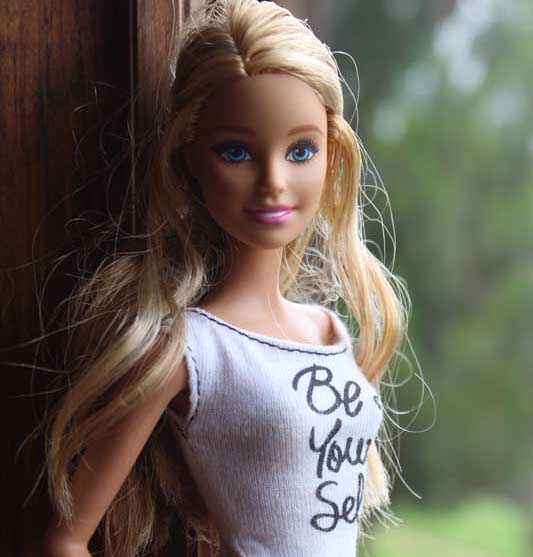Barbie mania is so pervasive that if one googles “Barbie” right now, the web page turns pink and sparkles with animated magenta stars.
Barbie has been a ubiquitous toy for decades, reigning as “supreme doll” before, during and after my childhood. So when I heard the new Greta Gerwig movie was Barbie, I was intrigued.
Gerwig’s previous films, Ladybird and Little Women, are poetic depictions of a mainstream story—women coming of age in a world hostile to them. They seem the perfect segue into Barbie, another reimagined feminine classic.
While one might expect shallow and beautiful, the Barbie movie owns it all—the good, the bad and the ugly—with a timely and compassionate message for women and men alike.
For the record, I didn’t see it with Oppenheimer, a phenomenon called “Barbenheimer,” where moviegoers watch the films as a double feature, ostensibly because they were released on the same day. For those participating in this five-hour film extravaganza, see Barbie last.
Directed by Gerwig, the live-action film Barbie was co-written by her and partner Noah Baumbach, and stars Margo Robbie and Ryan Gosling. It pokes fun at Mattel, even briefly featuring the character of Ruth Handler, first president of Mattel, who invented the iconic doll in 1959.
The story begins with “Stereotypical Barbie” living her best life in her dreamhouse, in an idyllic matriarchal world where the Barbies are in charge and the Kens play on the beach.
When Barbie suddenly has heretofore-unknown dark thoughts, she seeks the counsel of “Weird Barbie”—a Barbie who was played with “too hard” and as a result sports a choppy haircut, pen marks on her face and is always in the splits. Weird Barbie advises her to leave Barbie Land and travel to the “real world” to discover what’s wrong.
It’s a heroine’s journey into the dark-pink night of the soul, with dramatic consequences for not only Barbie, but for those in the real world and Barbie Land alike.
Part of the joy of the film is how visually over-the-top it is. The filmmakers spare no production-design expense, recreating all the accessories we remember, from the plastic furniture in the open-air dreamhouses to decals representing food on the fridge door.
Like Barbie herself these days, the film is more sophisticated than one might expect, and Gerwig uses all the satirical devices and comedy to deliver a drama with heart that is as aspirational for our world as its namesake doll is for kids.
Barbie was always considered an “aspirational” doll. Unlike baby dolls, Barbie represented what girls were to become personally; and what that is has changed considerably since 1959.
She’s come a long way, baby, to quote the old Virginia Slims cigarette ads from the ’80s, themselves conflicted times for feminism. For years, Barbies were only thin and white, with either platinum blonde or brunette hair. It wasn’t until the ’80s that Mattel made Black, Latina, and Asian Barbies. A Black doll in the Barbie world was first sold in 1968, almost a decade after Barbie was invented. But she wasn’t a Barbie, she was instead Barbie’s Black friend, Christie.
And more than just Barbie’s looks have changed. Moving on from her first words: “I love shopping,” and “Math class is tough,” her voice has evolved to the more inspiring “Find the beauty in everything you do,” and “What makes you different makes you special.”
Since the ’50s, Barbie has potentially become the most diverse doll line, and the doll in the film, and the film’s storyline, reflect those changes, too.
She’s come a long way; just don’t call her “baby.”
PQ
While one might expect shallow and beautiful, the Barbie movie owns it all—the good, the bad and the ugly—with a timely and compassionate message for women and men alike.












Thanks for your review/ essay. I just came home after seeing the movie at the Balboa Theater near my house. It’s definitely a thinking person’s movie with a lot to think about, though I don’t want to think about it right now. I’ll let it settle. My favorite line is the last one in the film. Oppenheimer next.